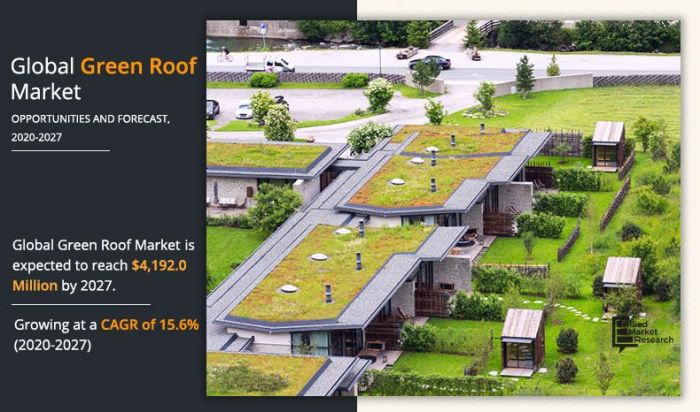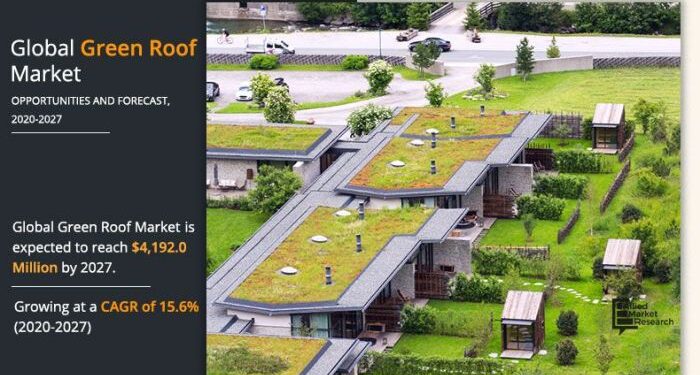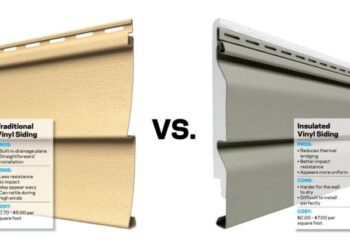As How Green Roofing Trends Are Shaping Global Construction takes center stage, this opening passage beckons readers into a world crafted with good knowledge, ensuring a reading experience that is both absorbing and distinctly original.
Green roofing is a concept that is revolutionizing the construction industry worldwide. From traditional roofing methods to eco-friendly alternatives, the shift towards sustainability is evident. Let's explore how these trends are reshaping global construction practices.
 Green roofs may involve higher initial costs compared to traditional roofing due to the additional materials and installation requirements. However, the long-term savings and economic benefits associated with green roofs can outweigh these initial expenses.
Green roofs may involve higher initial costs compared to traditional roofing due to the additional materials and installation requirements. However, the long-term savings and economic benefits associated with green roofs can outweigh these initial expenses.
Introduction to Green Roofing Trends
Green roofing is a sustainable building practice that involves covering the roof of a building with vegetation, soil, and other eco-friendly materials. Unlike traditional roofs, green roofs are designed to support plant life and provide a range of environmental benefits.Examples of Green Roofing vs. Traditional Roofing
- Green roofs are covered with vegetation, while traditional roofs are typically made of materials like asphalt or metal.
- Green roofs are designed to absorb rainwater and reduce stormwater runoff, whereas traditional roofs may contribute to water pollution.
- Green roofs provide natural insulation, helping to reduce energy consumption for heating and cooling, unlike traditional roofs that can absorb heat and contribute to urban heat island effect.
Benefits of Incorporating Green Roofs
- Improved air quality by filtering pollutants and CO2 from the air.
- Reduced energy costs due to natural insulation properties.
- Enhanced stormwater management by absorbing and filtering rainwater.
- Extended roof lifespan by protecting it from UV radiation and extreme temperatures.
Global Impact of Green Roofing Trends
Green roofing trends have made a significant impact on the global construction industry by promoting sustainable practices and enhancing environmental conservation efforts. Several regions and countries have emerged as leaders in adopting green roofing practices, influencing construction regulations worldwide and reaping the environmental benefits of green roofs on a global scale.Leading Regions in Green Roofing Adoption
- Germany: Known for its extensive green roof installations, with laws requiring green roofs on new buildings.
- Scandinavian countries: Embracing green roofs to combat urban heat island effect and promote biodiversity.
- North America: Cities like Chicago and Toronto incentivize green roofs to manage stormwater and reduce energy consumption.
Influence on Construction Regulations
- Green roofing trends have led to the incorporation of green roof requirements in building codes across various countries.
- Regulations now focus on promoting sustainable building practices and reducing the environmental impact of construction projects.
- Authorities are encouraging the integration of green roofs to improve air quality, reduce energy consumption, and mitigate urban heat islands.
Environmental Advantages of Green Roofs
- Green roofs contribute to carbon sequestration, reducing greenhouse gas emissions and combating climate change.
- They improve air quality by filtering pollutants and particulate matter, benefiting public health in urban areas.
- Green roofs help manage stormwater runoff, reducing the strain on sewer systems and preventing water pollution.
Green Roofing Technologies and Innovations
Green roofing technologies have evolved significantly in recent years, offering sustainable solutions for modern construction projects. These innovations not only enhance the energy efficiency of buildings but also contribute to environmental conservation.Latest Technologies Used in Green Roofing Systems
- Vegetated roof systems: Utilizing a variety of plants and vegetation to cover the roof surface, providing insulation and reducing stormwater runoff.
- Solar green roofs: Combining solar panels with green roofing systems to generate renewable energy while promoting biodiversity.
- Smart irrigation systems: Incorporating advanced irrigation technology to ensure efficient water usage and plant health maintenance.
Comparison of Traditional Roofing Materials with Eco-Friendly Alternatives
- Traditional materials like asphalt shingles and metal roofs have high carbon footprints and contribute to the urban heat island effect.
- Eco-friendly alternatives such as recycled rubber shingles, clay tiles, and living roofs made of vegetation offer better insulation and reduce energy consumption.
- Green roofs also provide natural habitats for birds and insects, promoting biodiversity in urban areas.
Innovative Designs and Features in Modern Green Roofs
- Green roof gardens: Creating recreational spaces or urban farms on rooftops to enhance the quality of life for building occupants.
- Biodiverse planting schemes: Incorporating a mix of native plants to attract pollinators and support local ecosystems.
- Modular green roof systems: Prefabricated components that allow for easy installation and customization of green roofs on various building types.
Cost Considerations and Economic Benefits
 Green roofs may involve higher initial costs compared to traditional roofing due to the additional materials and installation requirements. However, the long-term savings and economic benefits associated with green roofs can outweigh these initial expenses.
Green roofs may involve higher initial costs compared to traditional roofing due to the additional materials and installation requirements. However, the long-term savings and economic benefits associated with green roofs can outweigh these initial expenses.
Long-Term Savings
- Green roofs provide natural insulation, reducing heating and cooling costs for buildings.
- They can extend the lifespan of the roof membrane, reducing maintenance and replacement costs over time.
- Green roofs can also lower stormwater runoff, potentially reducing costs associated with drainage systems.
Increased Property Value
- Properties with green roofs are often seen as more attractive and environmentally friendly, increasing their overall value.
- Green roofs can improve energy efficiency and indoor comfort, making buildings more desirable to potential buyers or tenants.
- Studies have shown that green roofs can increase property values by up to 15% in some cases.
Environmental Sustainability and Green Roofing
Green roofs play a crucial role in promoting environmental sustainability by addressing various issues related to urban development and climate change. One of the key benefits of green roofs is their ability to reduce the urban heat island effect, which is a phenomenon where cities experience higher temperatures compared to rural areas.Reducing Urban Heat Island Effect
- Green roofs help to absorb and deflect solar radiation, reducing the heat absorbed by buildings and pavements in urban areas.
- This process helps to lower ambient temperatures and improve overall thermal comfort in cities, mitigating the heat island effect.
- By creating green spaces on rooftops, cities can combat rising temperatures and reduce energy consumption for cooling buildings.
Impact on Air Quality and Carbon Footprint Reduction
- Green roofs act as natural air filters by trapping dust particles and pollutants, thereby improving air quality in urban environments.
- The vegetation on green roofs absorbs carbon dioxide and releases oxygen, contributing to the reduction of greenhouse gas emissions and overall carbon footprint.
- Studies have shown that green roofs can help reduce air pollution and enhance biodiversity in cities, creating healthier and more sustainable urban ecosystems.
Successful Green Roofing Projects for Environmental Sustainability
- The High Line in New York City is a prime example of a successful green roofing project that has transformed a disused railway into a green oasis, providing ecological benefits and recreational space for the community.
- The Vancouver Convention Centre in Canada boasts the largest living roof in North America, showcasing how green roofs can be integrated into large-scale infrastructure projects to enhance sustainability.
- The Ford Dearborn Truck Plant in Michigan implemented a green roof system to reduce stormwater runoff, improve energy efficiency, and promote biodiversity on the factory's premises.







